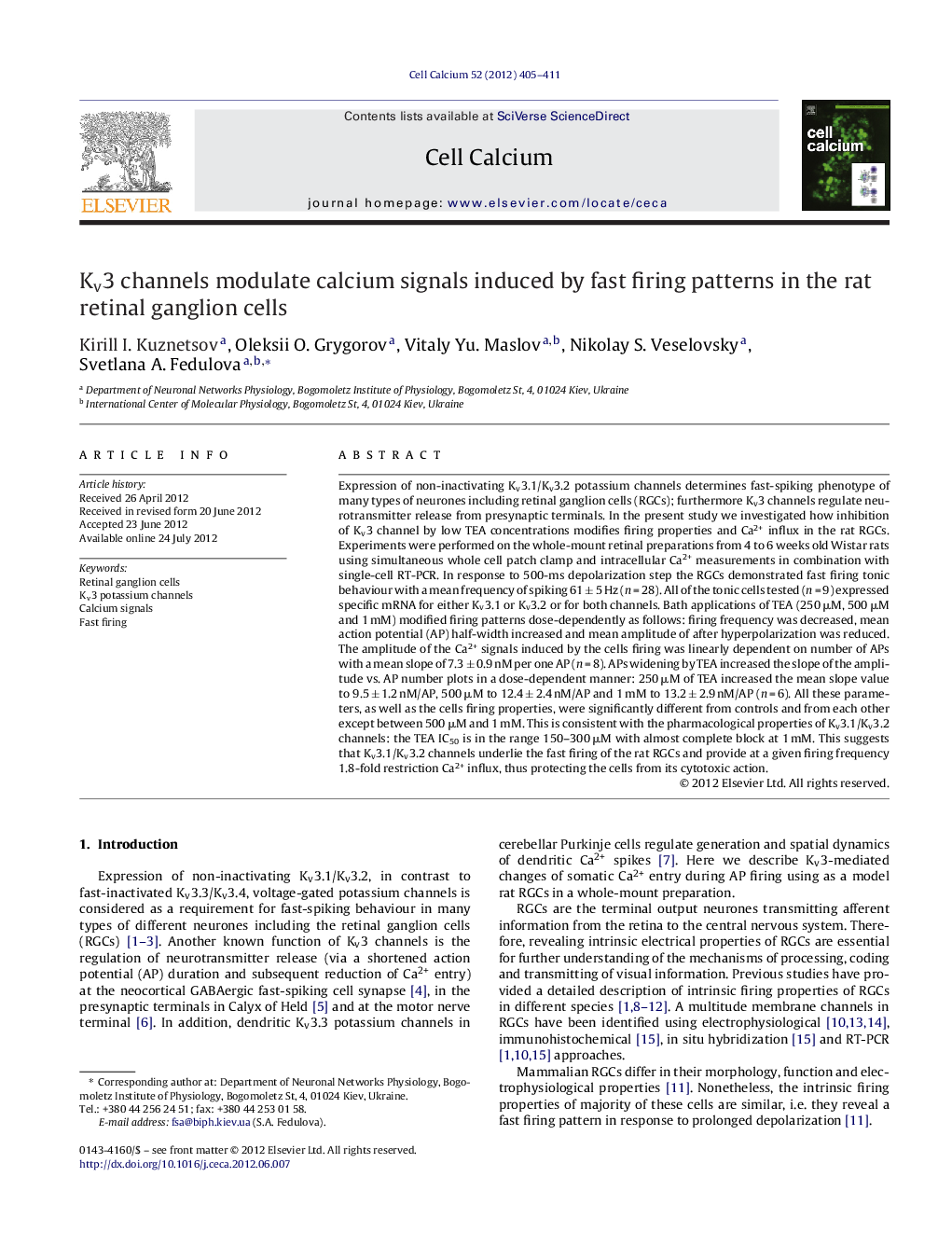| کد مقاله | کد نشریه | سال انتشار | مقاله انگلیسی | نسخه تمام متن |
|---|---|---|---|---|
| 2166149 | 1091821 | 2012 | 7 صفحه PDF | دانلود رایگان |

Expression of non-inactivating Kv3.1/Kv3.2 potassium channels determines fast-spiking phenotype of many types of neurones including retinal ganglion cells (RGCs); furthermore Kv3 channels regulate neurotransmitter release from presynaptic terminals. In the present study we investigated how inhibition of Kv3 channel by low TEA concentrations modifies firing properties and Ca2+ influx in the rat RGCs. Experiments were performed on the whole-mount retinal preparations from 4 to 6 weeks old Wistar rats using simultaneous whole cell patch clamp and intracellular Ca2+ measurements in combination with single-cell RT-PCR. In response to 500-ms depolarization step the RGCs demonstrated fast firing tonic behaviour with a mean frequency of spiking 61 ± 5 Hz (n = 28). All of the tonic cells tested (n = 9) expressed specific mRNA for either Kv3.1 or Kv3.2 or for both channels. Bath applications of TEA (250 μM, 500 μM and 1 mM) modified firing patterns dose-dependently as follows: firing frequency was decreased, mean action potential (AP) half-width increased and mean amplitude of after hyperpolarization was reduced. The amplitude of the Ca2+ signals induced by the cells firing was linearly dependent on number of APs with a mean slope of 7.3 ± 0.9 nM per one AP (n = 8). APs widening by TEA increased the slope of the amplitude vs. AP number plots in a dose-dependent manner: 250 μM of TEA increased the mean slope value to 9.5 ± 1.2 nM/AP, 500 μM to 12.4 ± 2.4 nM/AP and 1 mM to 13.2 ± 2.9 nM/AP (n = 6). All these parameters, as well as the cells firing properties, were significantly different from controls and from each other except between 500 μM and 1 mM. This is consistent with the pharmacological properties of Kv3.1/Kv3.2 channels: the TEA IC50 is in the range 150–300 μM with almost complete block at 1 mM. This suggests that Kv3.1/Kv3.2 channels underlie the fast firing of the rat RGCs and provide at a given firing frequency 1.8-fold restriction Ca2+ influx, thus protecting the cells from its cytotoxic action.
Journal: Cell Calcium - Volume 52, Issue 5, November 2012, Pages 405–411